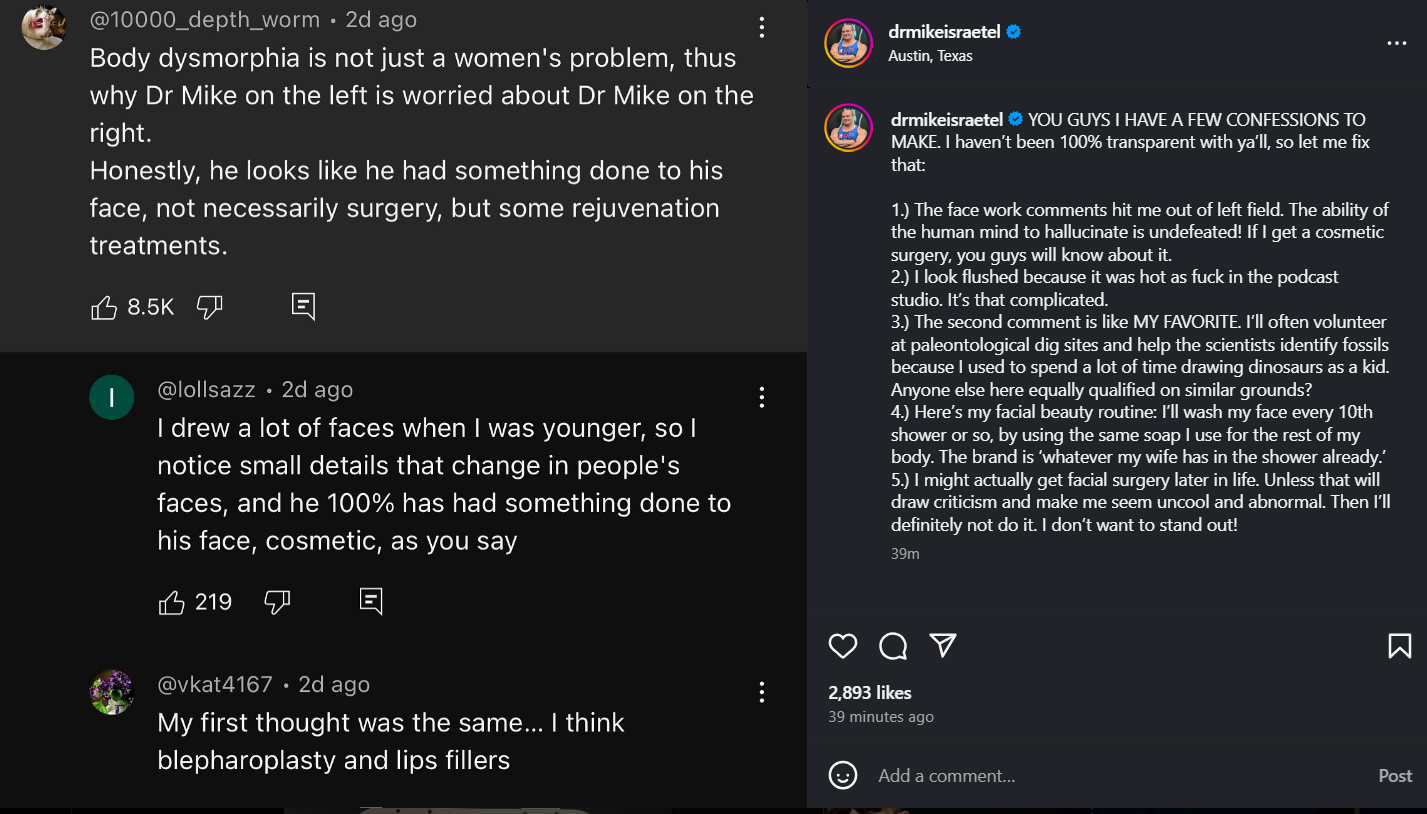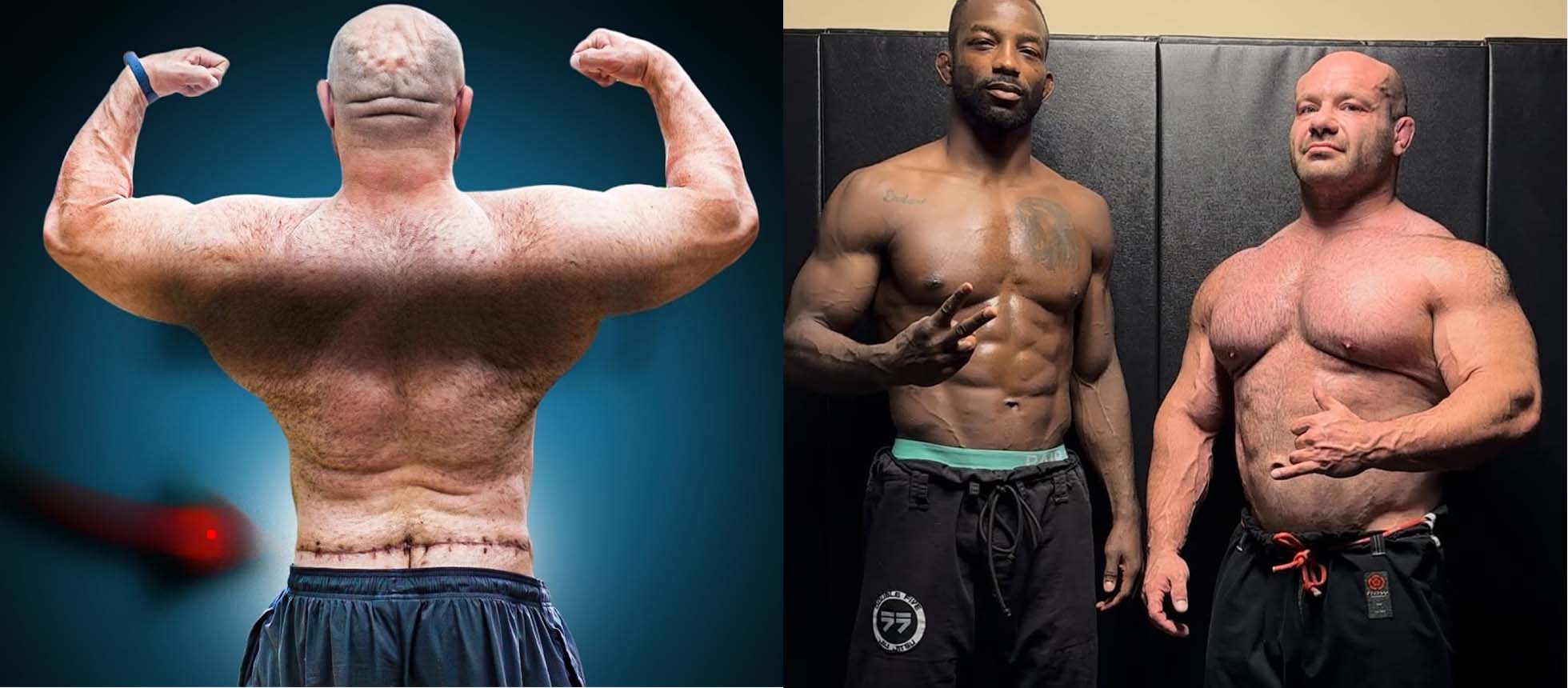Dr. Mike Israetel, the bodybuilder, sports physiologist and Brazilian Jiu-Jitsu black belt behind Renaissance Periodization, has been unusually transparent about his pursuit of aesthetic surgery. On a recent podcast, he laid out a roadmap of procedures he has already undergone and others he still plans to chase — including the step of breaking ribs inward to carve out a smaller waistline.
Israetel’s foray into cosmetic surgery started with an operation to eliminate his love handles. Performed by Dr. Douglas Steinbrech in Chicago, the procedure involved a 270-degree incision wrapping from his hips around his back plus two vertical incisions in the flanks. It combined extensive liposuction with skin excision.
The recovery was tough.
“Surgery is super easy but incredibly painful and uncomfortable to the extent that dieting and training can never touch,”
Israetel admitted. Weeks of limited mobility and discomfort left him feeling like his body had sustained major trauma. Still, the outcome convinced him the pain was worth it. He described the results as
“sublime”
and
“unbelievable.”
Not content with one procedure, Israetel is now eyeing follow-ups. His next steps include addressing loose skin and fat deposits around his lower chest and back with techniques like “body tight” — a procedure that uses heat to contract skin while simultaneously performing liposuction and micro-liposuction to sculpt the arms and shoulders.
The most ambitious part of his plan is an abdominal wall reconstruction. Despite maintaining very low body fat, Israetel says he inherited a
“big gut”
from both parents, rooted not in fat but in abdominal wall laxity. Surgeons would placate his obliques and rectus abdominis — stitching them tighter — to bring his waist inward. To prevent the muscles from separating again, a permanent polymer sheath would be installed around his midsection, functioning like an internal corset.
Even with these surgeries, Israetel has his eyes on something far more radical.
“I have been thinking about potentially going to that next level of surgery and getting my two bottom ribs broken inwards to have an even cooler, even smaller waist,”
he revealed.
He sees it as the final step in maximizing his proportions, combining his naturally narrow hips with rib modification to create what he calls a
“tiny waist”
something he describes as
“magical.”
Israetel frames his surgical ambitions as part of what he calls
“The Aesthetic Revolution,”
also the title of his upcoming book.
“At the end of the day, I want to look like my vision of what a cool physique looks like,”
he explained. To him, the body is a canvas and surgery is just another tool for sculpting it.

He’s clear-eyed about the risks. None of these procedures improve health and some may even compromise it, but he doesn’t see that as disqualifying. Instead, he likens it to other voluntary risks people accept in everyday life:
“The recovery was a real pain in the ass. Way, way harder, way more uncomfortable than any diet I’ve ever done,”
he said, before adding that he still considers it worth it.
Israetel’s openness about surgical modification has split his audience. Some applaud his honesty about the physical and psychological costs of cosmetic surgery while others question the message it sends to his followers in the fitness community. Critics argue that his pursuit of aesthetics undermines his role as a health educator.
Yet, Israetel appears unbothered. For him, aesthetics are central to quality of life and he believes advances in surgery, pharmaceuticals and even genetic engineering will eventually allow anyone to look exactly how they want. His case underscores a growing trend: the collision between bodybuilding, influencer culture and the frontier of elective body modification.


